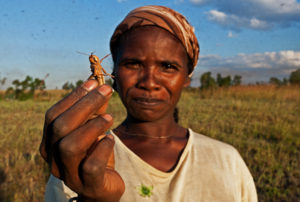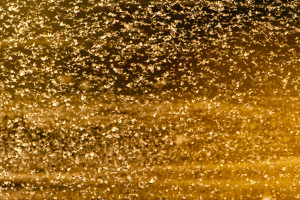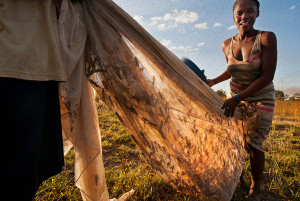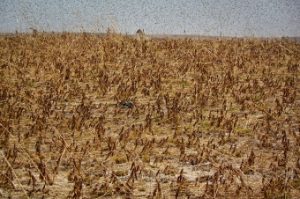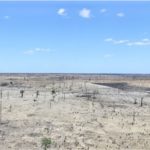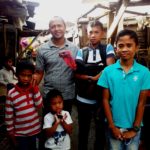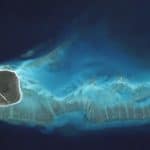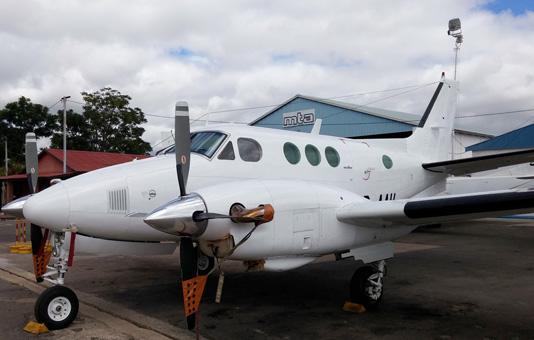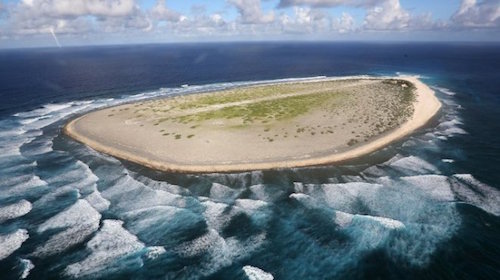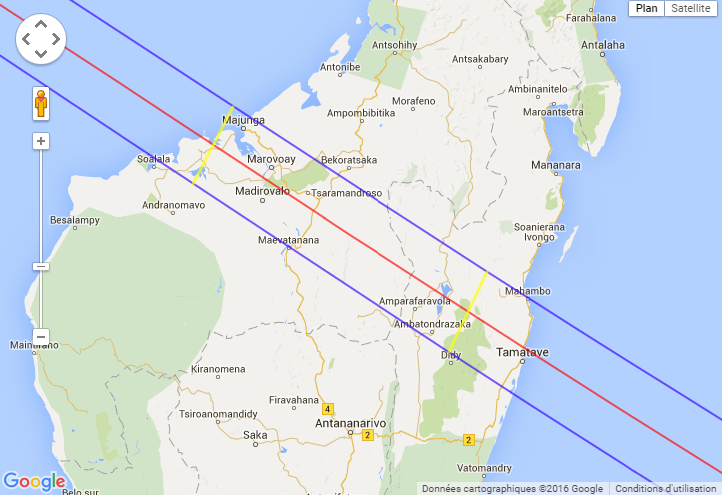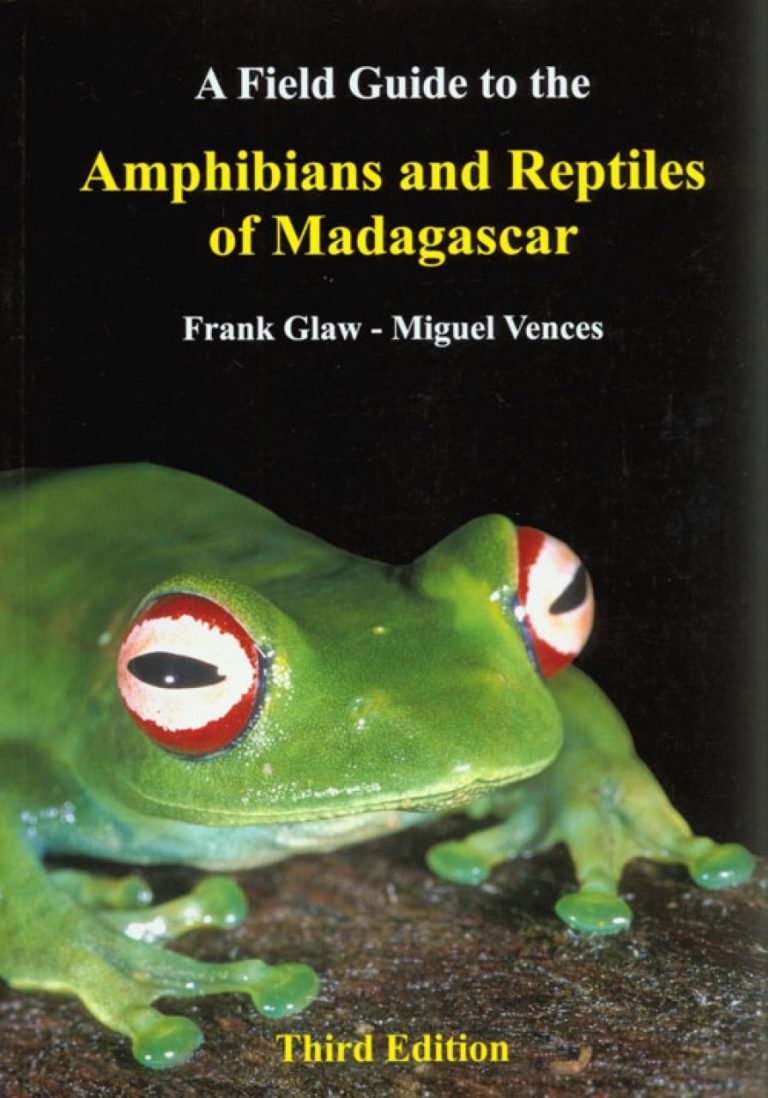Crisis in agriculture
When a poor country like Madagascar is hit by natural disasters, are the consequences are still noticeable years later. This is also because the country lacks the financial resources to deal with the consequences. Hunger and devastated areas are the consequence of this. one of the largest plagues of locuststhat has ever afflicted the country.
When Cyclone Haruna hit the southwest of the country in February 2013, causing widespread
While it caused flooding in the coastal areas, it also created ideal conditions for one of the worst insect plagues in recent years to spread. The south of the country in particular often suffers from prolonged droughts and hurricanes, which make the living conditions of the people particularly difficult: Almost 90% of the population here live very far below the poverty line. Since agriculture is the basis of survival for the population in these poor areas, the Population in Madagascar the already poorest people in the country suffer the most from the consequences of the locust infestation. 13 million people, i.e., more than half of the population, make their living directly or indirectly from agriculture and see their livelihoods threatened time and again by unfavorable weather conditions and environmental and climatic disasters. The last major locust plague was a particularly drastic experience for Madagascar's farmers: already in winter, i.e. in the most unfavorable conditions, the locusts became a problem that the farmers were unable to deal with using their simple means. Within a very short time they spread over the farmland and attacked any crops in large swarms. Once a density of several thousand adults per hectare is exceeded, the insects turn into mobile swarms. For this reason, one commonly speaks of Migratory locusts. These migrations are necessary for the survival of the species, but also lead to ecologically complementary areas being colonized by the insects to an extent that can hardly be controlled and rendered useless for agriculture. Already in the first months of the locust plague, the swarms were so dense that the sky remained dark for hours.
The Locust Plague 2013/14 - Extent of the Crisis
Even a single swarm consists of several million animals, which reproduce rapidly under the particularly favorable climatic conditions. The Temperatures around 25°C and the moderately humid environment of the savannah (less than 100 mm of rainfall per month) provide all the conditions for an accelerated life cycle of the unloved insects. Especially in these warm savannah areas, there is no embryonic pause in the reproductive cycle, so the swarms continuously grow larger and eventually divide into many more. The migratory locusts feed primarily on Grasses. This also stands Cereals on the menu of the animals. Thus, they are only too happy to attack the rice fields of the Malagasy. A single swarm can reach up to 100,000 tons of green fodder per day off and moves on as soon as the area can no longer feed the insects. The land is then unusable for any agricultural use. Thanks to their strong wings, migratory locusts are extremely mobile and cope with huge distances. They rest when they have found an area that provides them with equally good conditions for reproduction and lay their eggs there. The larvae hatch under high humidity and are sexually mature after only about one and a half months. Especially during the rainy season, the reproduction of the insects can thus not be contained without expensive insecticides. During the last major Migratory locust plague 2013/2014 Within a very short time, the pests populated widely over half the island. They not only destroyed the fields in the poor south of the country, but even spread to the highlands and to the suburbs of the capital Antananarivo.
Getting rid of the locusts. But how?
If left untreated, a plague of grasshoppers can more than ten years persist. In the process, the areas colonized by the pests expand every year due to the constant increase in insect populations. Crops and livestock pastures are Permanently unproductive and the livelihood of the population in Madagascar, one of the poorest countries in the world, is seriously threatened. 60% of the country were already affected by the locust invasion in 2013. In such crisis situations, both the government and the country's population are overwhelmed. Since the Means for successful control of the pests are lacking, people have no choice but to try to drive away the locusts with fire and smoke. The success of these measures is only moderate: Despite all efforts, the insects destroy a year's work within a few minutes. Due to the destroyed harvest, the families lack food and the locusts also mercilessly attack the cattle pastures. Where once rice or cassava was dried, locusts are now drying, which the population catches with primitive means, dries and then eats. Insects as food is more of a stopgap solution on such a large scale, since there are no other ways of obtaining food. This cannot compensate for the loss of fields and pastures.
To deal with the locusts permanently, Madagascar needs the support of the western world. Unfortunately, awareness of the devastating situation on Africa's largest island is lacking in Europe and the USA. Moreover, caution is called for in the choice of means. Without helicopter operations and the use of chemical pollutants, a plague of locusts cannot generally be dealt with. However, providing these means does not solve the problem. It must also be comprehensive educational work be made with the population, which in the Handling insecticides not trained and handles them too cluelessly. In the worst case, and without sufficient education, the locusts can be dealt with, but the health of the population is at risk. Madagascar alone can hardly face such problems, the island nation needs Help from other countries.

